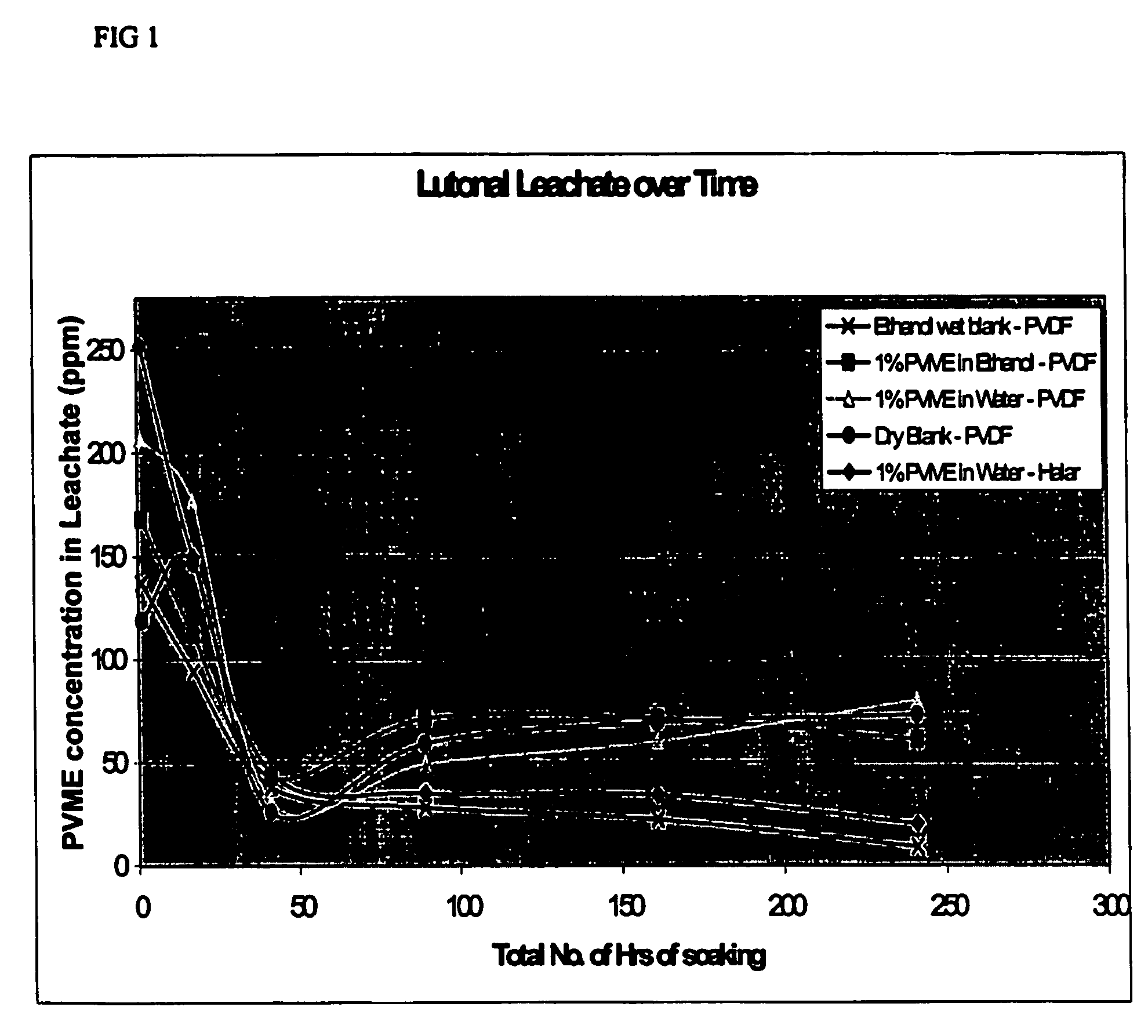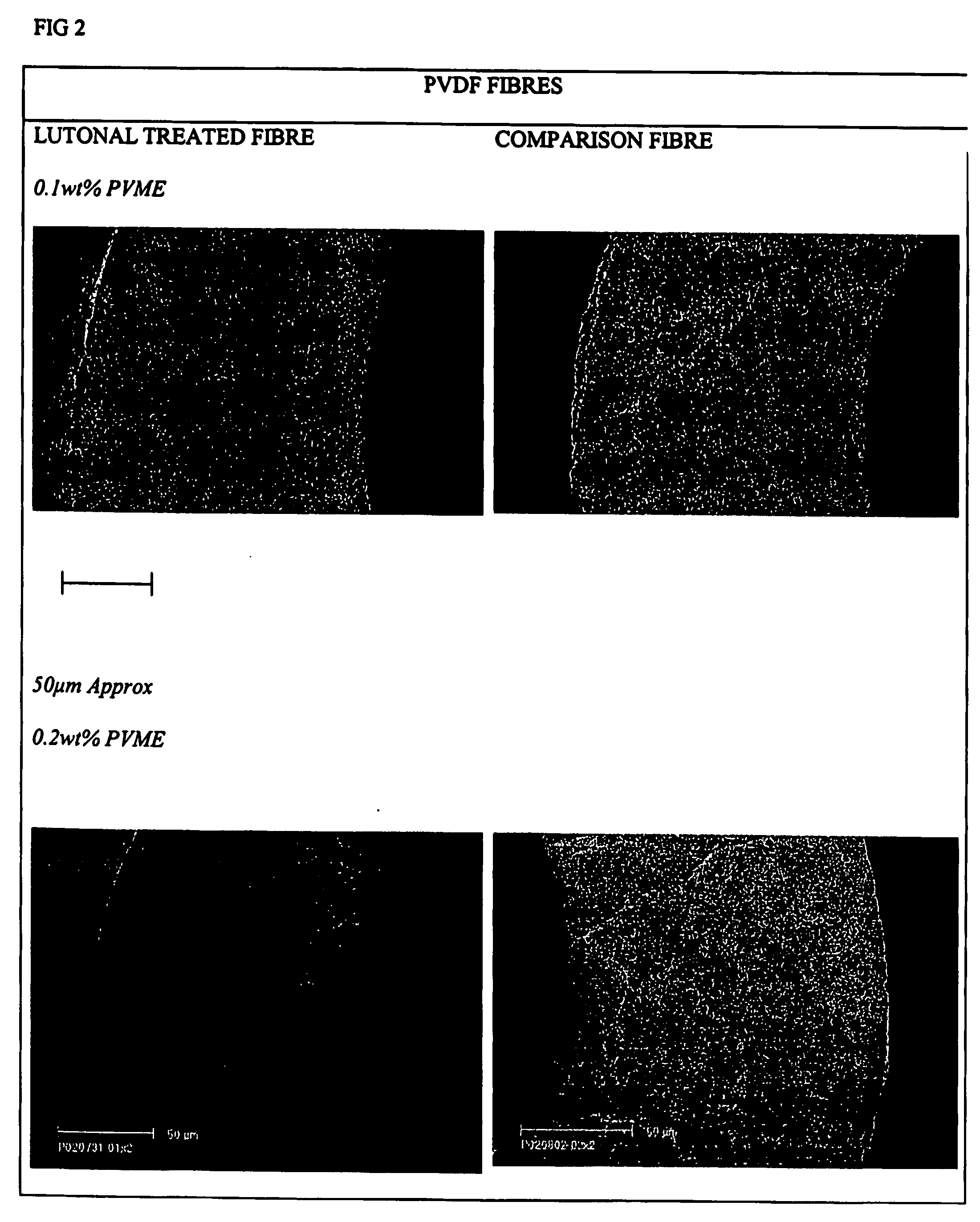Membrane post treatment
a membrane and post-treatment technology, applied in the field of compositions, can solve the problems of membrane damage, de-mixing, and thermodynamic instability, and achieve the effects of low toxicity, low toxicity, and easy hydrolysis
- Summary
- Abstract
- Description
- Claims
- Application Information
AI Technical Summary
Benefits of technology
Problems solved by technology
Method used
Image
Examples
examples
Post Treatment Studies
[0058] The post-treatment of a variety of membranes with a cross-linkable hydrophilising agent was investigated. PVDF, Halar and PP membranes were all tested. For the Halar membranes, both MF (microfiltration) and UF (ultrafiltration) membranes were tested.
[0059] The general procedure for treating the pre-prepared PP and PVDF membranes was as follows:
[0060] The dry membrane was soaked in a PVME (Lutonal M40) solution with, solvent, concentration and soaking time as specified. The membrane was subsequently removed from the PVME solution and placed into wash water for 4 hrs. The membrane was then dried for about 4 hrs
[0061] The membrane was then tested for the ‘wicking’ of an aqueous solution of dye and the permeability of the fibre was also tested.
[0062] A sample of the membrane was then soaked in water at 65° C. for 1 hr and the permeability of the heat-treated membrane was also tested.
[0063] The general procedure for treating the pre-prepared Halar memb...
PUM
| Property | Measurement | Unit |
|---|---|---|
| Fraction | aaaaa | aaaaa |
| Fraction | aaaaa | aaaaa |
| Time | aaaaa | aaaaa |
Abstract
Description
Claims
Application Information
 Login to View More
Login to View More - R&D
- Intellectual Property
- Life Sciences
- Materials
- Tech Scout
- Unparalleled Data Quality
- Higher Quality Content
- 60% Fewer Hallucinations
Browse by: Latest US Patents, China's latest patents, Technical Efficacy Thesaurus, Application Domain, Technology Topic, Popular Technical Reports.
© 2025 PatSnap. All rights reserved.Legal|Privacy policy|Modern Slavery Act Transparency Statement|Sitemap|About US| Contact US: help@patsnap.com



